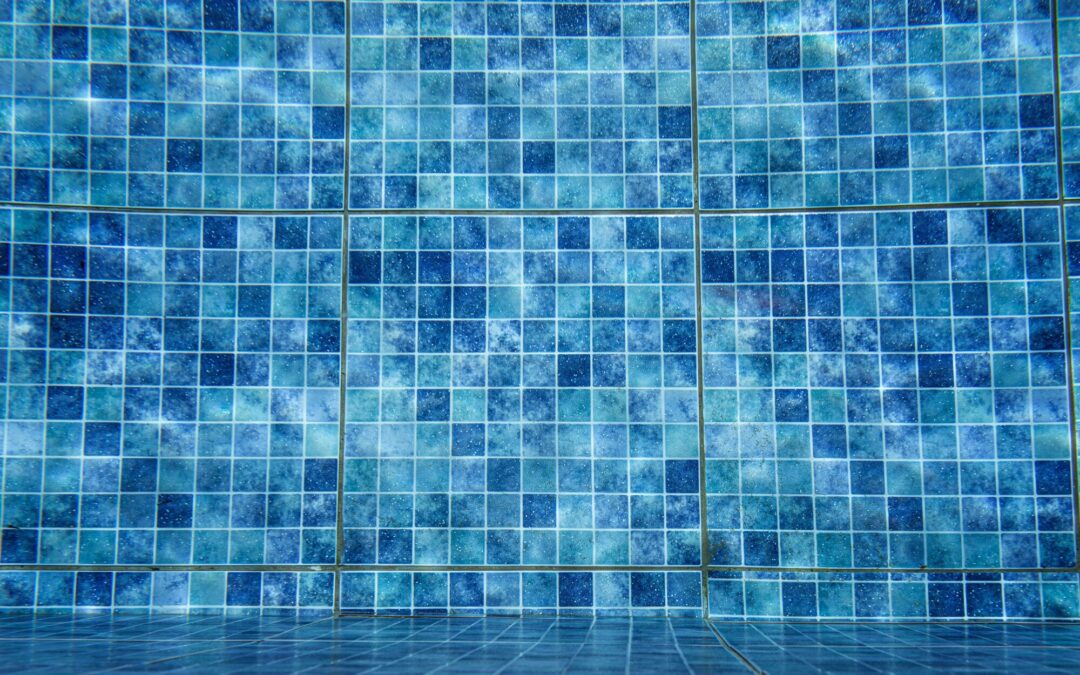Installing a new swimming pool is an exciting project that many homeowners plan for years. Once you start planning and delve into the details, it’s time to pick out swimming pool tile. Tiling your pool makes it more attractive, can provide grip, aids cleaning, and helps protect the underlying pool structure.
Tile for swimming pools comes in an endless variety of colors, sizes, and shapes. While “swimming pool tile” refers to the tiling within swimming pools, it also describes the tiles that cover the outside of above-ground pools and those installed poolside.
While you have a lot of choices when it comes to appearance, most tiles fall into several basic categories. Take a look at these common types of swimming pool tile to help make your decision.
1. Classic Ceramic and Porcelain Tile
Lining a pool with ceramic or porcelain tile creates a classic appearance for a reasonable price. These tiles come in a wide range of sizes and shapes, and you can find them in any color you want if you’re willing to pay for the looks.
Porcelain is the pool tile of choice for businesses and schools looking to put their logos and mascots on the bottom of the pool. Of all the basic kinds of pool tile, it’s the easiest to paint. If the tilemaker paints the design in glaze and fires the tiles in a kiln, the image can last for many, many years.
Another aesthetic use of ceramic tile is in mosaic tile patterns. Commercial mosaic tiles come in sheets of small squares or rectangles. If you have a small fortune to spend, you can hire a pool mosaic artist to design an image from pieces of ceramic.
Smooth ceramic also comes with a safety benefit: Unlike some kinds of stone and concrete, ceramic won’t ever scratch your skin. Parents, their kids, and elderly swimmers enjoy that assurance.
If you’re looking for a kind of tile that provides some grip, you don’t have to settle for a style that might scratch the skin. Tile manufacturers make ceramic tiles with textures that prevent slipping.
You can use textured ceramic to surround your pool. It lets you match the poolside tile to the tile within the pool without worrying about too much slipperiness. Textured tile is also perfect for shallow wading areas and on stairs inside the pool.
2. Durable Glass Tile
If you’re prepared to spend a bit more upfront for a long-lasting option, consider glass tile.
Although many know glass, in general, as a very fragile material, glass tile for pools is much the opposite. It’s non-porous, so there’s no risk of it taking on water and breaking down. Cracks are very rare and most happen when irresponsible companies install glass tiles that are too large or install them the wrong way.
Most glass pool tiles are very small, often a square inch or less. While mosaic tiles are one of several options with porcelain, the majority of glass pool tiles come in mosaic sheets.
You can combine different colored sheets of mosaic glass tile into a unique pattern. Colorful glass in mosaic patterns is also attractive out of the water, so some choose to tile the outside of raised pools and spas with it. Unlike porcelain tile, you don’t often see it used on the ground surrounding swimming pools.
Once a pool specialist installs your glass tile and you fill it up, you’ll see the real aesthetic benefit of glass. Sunlight refracted through the poolwater bounces off the glass and makes an eyecatching glitter effect.
3. Natural Stone Tile
Stone pool tiles are often affordable but have an expensive look. This variety of tile also appeals to homeowners that want to suggest their manmade pools are natural wonders. They’re most common as tiles surrounding pools, but some people use them within the pool.
Stone tile can help you transform your backyard into an oasis with boulders and plants. In those settings, it doesn’t look as out of place as ceramic and glass sometimes do.
Whether that’s your style of choice or not, covering the outer walls of above-ground pools and spas with stone tile makes them look more natural. When matched with ground tile and in-pool tile, you get a seamless, organic look.
While non-textured ceramic and glass can be very slippery, some kinds of stone tile are safer. Sandstone, flagstone, and travertine are a few popular options that have a decent amount of grip.
However, the texture of these types of stone is owing to their porous nature. You must seal them to avoid staining and possible structural damage.
Slate tile has a beautiful look but is often slippery. If you surround your pool with slate, be cautious to avoid injury.
4. Beautiful Brick Tile
Even more than stone, brick in the pool area creates the appearance of wealth at a low cost. Red and orange brick next to a shimmering blue pool has lovely contrast.
While basic bricks are great for building hot tubs and other structures, there are also brick pavers, veneers, and flat tiles. Brick tile is more common surrounding pools than it is within them, but people surface pools with it on occasion.
A major reason brick isn’t more common in pool areas is because, like many kinds of stone, it’s porous. In fact, it’s much more porous than a lot of stone tiles and takes on more water.
If you don’t seal stone, the worst damage you get is often staining. If you use brick in or around your pool without sealing it, the risk is more significant.
When water gets into brick tile over and over without draining, it breeds algae, moss, and mold. It also makes poolside surfaces slippery and can cause the brick to crumble.
Swimming Pool Tile and Other Pool Essentials
Now that you know these primary types of swimming pool tile, you can choose the best option for you. If you want to update your pool tile, get essential pool maintenance, or install a new pool, you’re in the right place.
We at Sahara Construction & Custom Pools pride ourselves on quality service. All our specialists are Certified Pool Operators (CPOs), so you know we’re a company you can trust. If you’re a homeowner in Katy, Texas, Firethorne, Cinco Ranch, or other cities in our service area, contact us here for a free quote.




